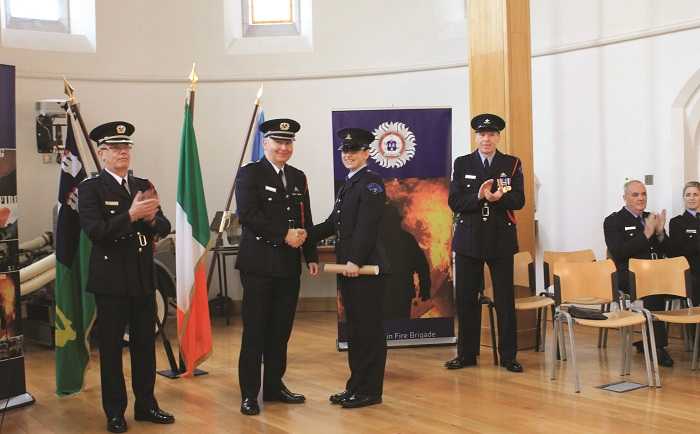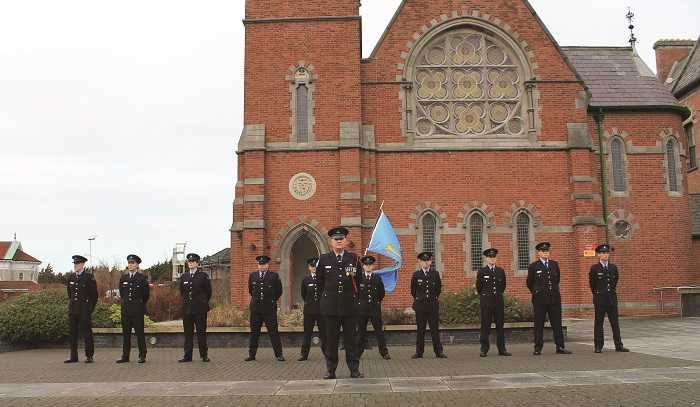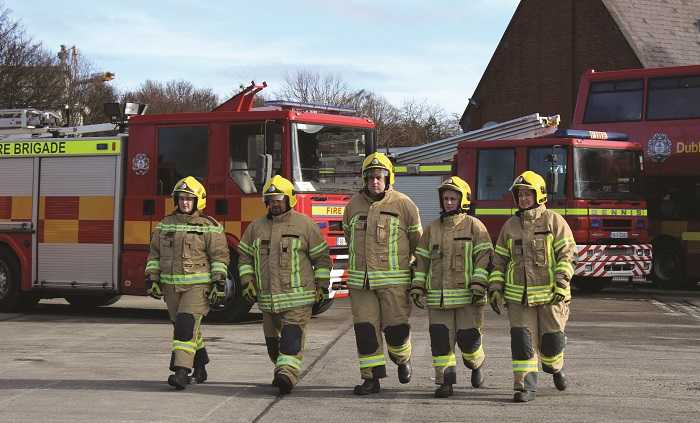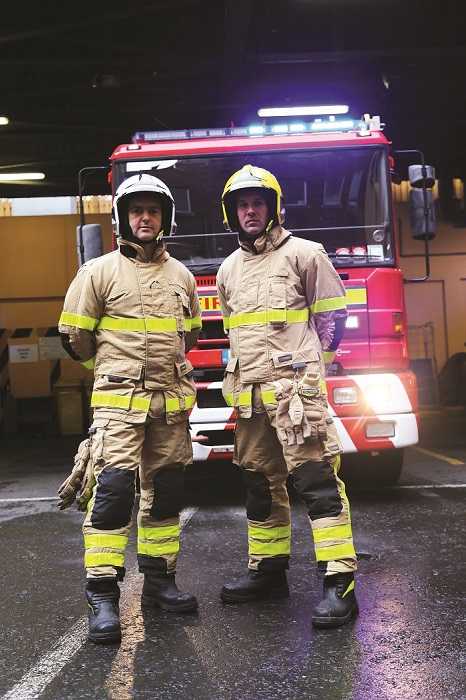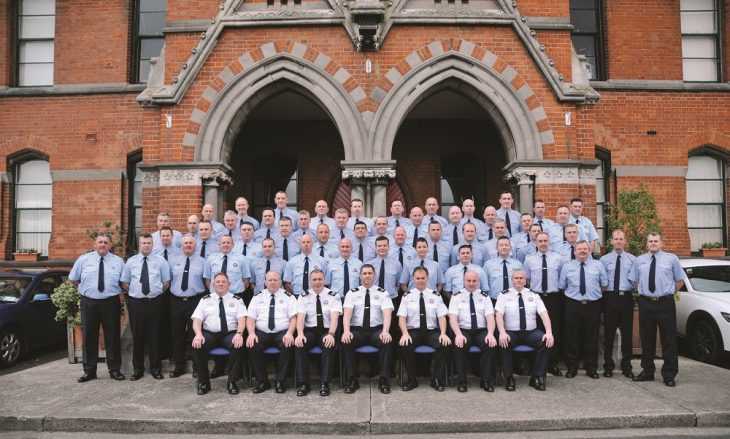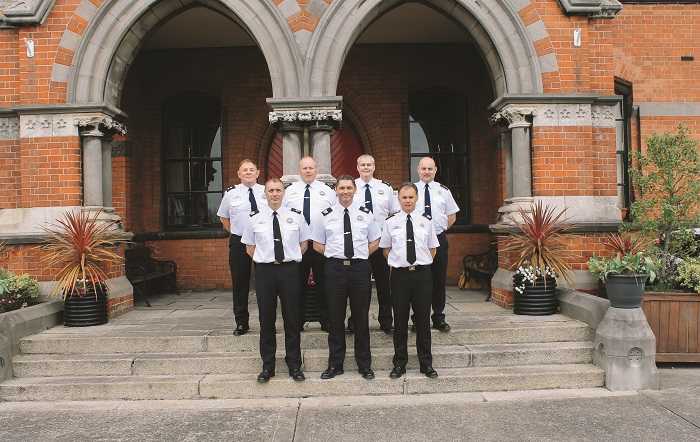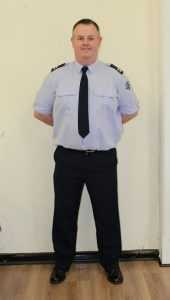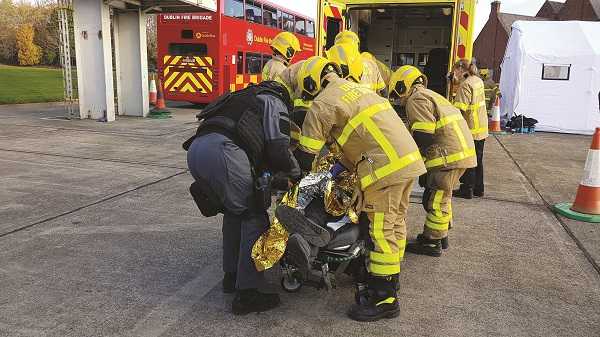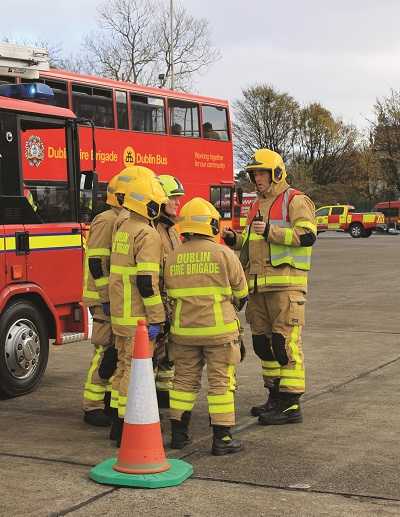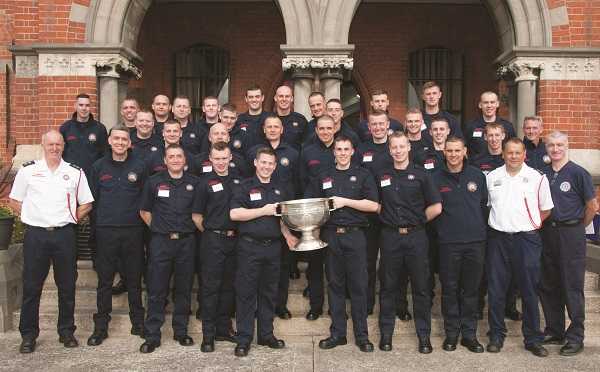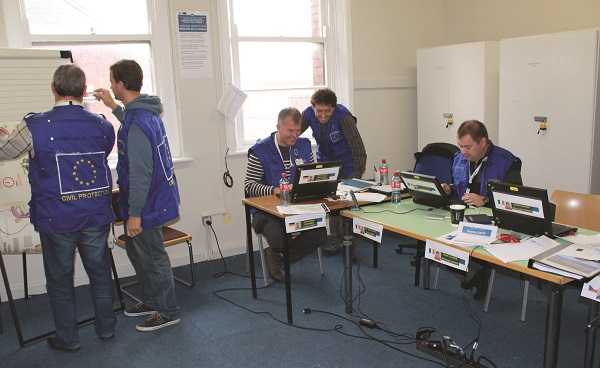From Dolphin’s Barn to the DFB museum, Paul Hand has seen and done it all. Conor Forrest caught up with the busy retired firefighter and current museum curator, to learn more about a career spanning three decades.
As Paul Hand describes it, February 13th 1978 was a fateful day. That was the former butcher’s first day in Dublin Fire Brigade, walking through the doors of Kilbarrack fire station to begin his training in a career that he would leave only following his retirement 32 years later. He was encouraged to join by friends of his already serving in the brigade – Timmy Horgan, Eddie Finley, Jim Murphy and others. “When they heard it was coming up, they said ‘Go for it, why not?’ And I never looked back,” says Paul. When his training was completed, Paul was first sent to Tara Street. “The first night in Tara Street I was checking the motors, and this gentleman tapped me on the shoulder and said ‘Do as I tell you and you’ll be alright’,” he recalls. “I said ‘I’m your man’.” Having seen service in Tara Street, Rathmines, Dolphin’s Barn, Finglas, Kilbarrack and Buckingham Street, Paul spent most of his career in North Strand, a busy station with a broad area of responsibility on the city’s northside.
“I was sent to No 4 in 1980 and I was there for 30 years. When I went there first there were three cars there, 4-1, 4-2 and 3-2. Dorset Street had closed and they moved the car over to North Strand. It was one of the busiest cars in the city at the time. If you were on 3-2, forget about it – you were out all night. If there was relief needed anywhere in the city you were up first for that,” he says. “I stayed there and I retired out of there, and I have some great memories. They were good, solid men. The likes of Joe O’Brien, Jack O’Rourke and Martin Messitt – they wouldn’t let you go wrong. They were good men, family men. We were all there just to earn a wage to rear our families.”
Family was important to those within the brigade, but those in the job also thought of one another as their second family, Paul explains. “That’s what the fire brigade was all about. You were part of a family. I had a family at home, I had a wife and three kids, they were my family. But the fire brigade was the other family, they really were,” he says. “When I look at photographs, I look at Terry Fitzpatrick, an elderly man back then, he was an out and out gentleman, he wouldn’t let you go wrong. Officers would say to him ‘What do you think Terry?’”
Learning from the best
Though his training undoubtedly prepared him for life in Dublin Fire Brigade, Paul would go on to learn more about the intricacies of fighting fires from the senior men in the job. “In Tara Street, some of the characters in there, some of the senior men, I must only say they were brilliant, they were never offputting or gruff. They would tell you ‘Do as I tell you, and if I say stop, you stop.’ And that was the teaching we got,” he says. “When I went to North Strand first, Paddy Leavey was the District Officer there, a gentleman. He had a son in the job and his grandson is in the job today. Tony Rowan, he was a station officer, and Johnny McMahon, probably one of the best fire officers in Dublin Fire Brigade. He was straight down the line, he would tell you ‘Do your work and there’ll be no problem’. And you did your work, you weren’t afraid to work.”
It was teaching that would serve Paul and Dublin Fire Brigade’s new recruits well, as they would attend some major incidents over the following years. When he was stationed in North Strand, large scale blazes weren’t out of the ordinary, and Paul tells me about a fire in North Wall that took 20 appliances to contain, following a night of difficult firefighting. “It was a raging inferno. You don’t see that anymore because now it’s all units, so it’s surround and drown. But the likes of Castleforbes was so big that you couldn’t, you had to go in and go after it. We knocked the fire down that night,” he tells me. “Thermal imaging was only in its infancy back then. Nearly every truck now has two or three imaging cameras on it, and rightly so.”
In 1981 Paul was serving on D watch, which responded to the fire at the Stardust nightclub in Artane on the night of February 14th. Around 841 people had attended a disco there that night – 241 people were injured and 48 people lost their lives. Among those who lost loved ones in the fire was Paul’s colleague Jimmy McDermott, who had taken Paul under his wing that first night in Tara Street.
“On the night of the Stardust he lost three children. He was on leave that night and when we came back that morning the phone was ringing. He said ‘Paul, did you see the kids?’ I said ‘Jimmy, it was bedlam out there.’ That was a horrific night. That was a night when everything changed in the city,” Paul recalls sombrely. “People would ask you what sticks in your mind. I suppose the Stardust and children, they’re the two big pitfalls of this job. Children have seen very little of life, we’ve seen a lot. It’s tough to deal with but when you go back to your station and you look at your colleagues, any one of them could be your counsellor. We saw it all together.”

Main image: Class of 1978, including Paul Hand (back row, fifth from the left). Above: Paul (red jumper) with Greg McCann (on his left) and Greg’s family, one of many visitors to the DFB museum.
[adrotate group=”2″]
Taking on the museum
Paul retired from the job in 2009, and joined the Retired Members’ Association. Several years ago he was asked if he would take over the curation of the brigade museum following the departure of Las Fallon, and he agreed. His interest in the brigade’s history began during his time in North Strand. There he met two firefighters – Eamon Fitzpatrick and Tony McCabe – who had talked about starting a museum. Though they were on opposite watches, when they did meet, Eamon would talk about his family history in the job: his father had served in the brigade, fought in the Rising and had died in Rathmines fire station of an injury sustained during a gunfight with members of the National Army on Cavendish Road in 1922. Sitting in one of the old appliances one day, Paul discovered an old, wooden handled axe. “I went back to the station and the next morning, when Eamon was coming on, I said ‘Eamon, I know you’re starting a museum, there you go!’ And that’s how it started with me and him.”
Anyone who has visited the museum will know that it’s a fascinating place, running the gamut of the brigade’s history across two floors in the OBI. The collection is quite diverse, ranging from the old switchboard used in Tara Street in times long past, and the original red woollen uniforms, to a helmet which was once in the possession of James Conway, and early breathing apparatus, attracting not only firefighters past and present but members of the public, tourists, schoolchildren, Men’s Sheds and many others. When I arrived to interview him, Paul had just unearthed the first occurrence book for Kilbarrack when it first opened in 1972.
“There’s a lot of history here. From the time of the red turnout gear, the boots, the brass helmets. The donated helmet which came in from the Conway family, that has pride of place. They are very old – 99 per cent of the stuff here is on loan from families,” he says. “When you look at the pictures around the walls they tell of our history, and some of the men who died in their service.”
Last year was an understandably busy year for the museum, with Las Fallon spearheading various exhibitions around the city on the brigade’s role in the 1916 Rising, which is becoming increasingly well known. “I must say that Las Fallon is absolutely great with what he’s doing. Our chief, in fairness to Mr Fleming, has backed us all the way,” says Paul. “We have an exhibition over in City Hall, we have a number of exhibitions out in libraries as well. Even here we’re getting more and more items, there’s stuff coming into us every week. I need a bigger place!”
From his viewpoint in the museum, where Dublin Fire Brigade’s past and present collides, and in the OBI which operates as the beating heart of training and best practice, Paul believes that DFB is only getting stronger as the years go on. “When we joined the fire service you were trained to a fairly high standard. But now the standard of training is 100 times better. Dublin is the second safest city in the world to have a heart attack – Salt Lake City is the first,” he explains. “Health and safety is coming into it more and more. You now have a welfare officer here, and he’s doing great work. The brigade is going to get stronger.”
Paul’s son has followed in his father’s footsteps, and is loving his chosen career, stationed in Kilbarrack, where his father worked all those years ago. Paul himself looks back on those 32 years with fond memories. “I’d do it all again tomorrow,” he says with a smile.
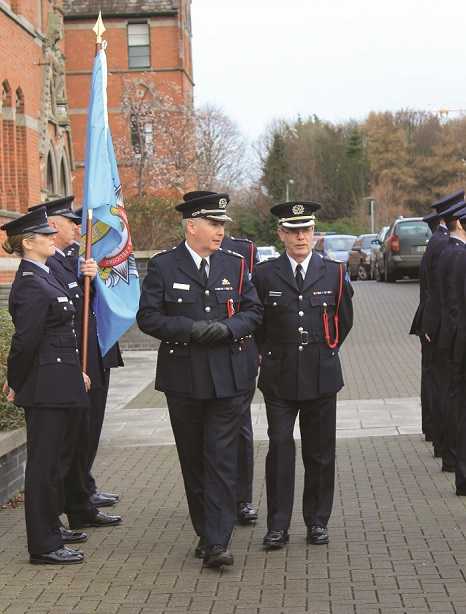 In addition, he touched on the need for resilience and their ability to bounce back – some of the calls received by emergency service controllers can take their toll, and care and support from their loved ones at home is very important to cope with trauma.
In addition, he touched on the need for resilience and their ability to bounce back – some of the calls received by emergency service controllers can take their toll, and care and support from their loved ones at home is very important to cope with trauma.